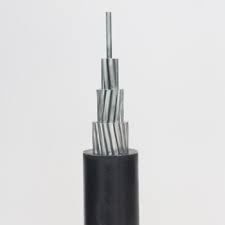The entry test of the wiring system is mainly divided into aerial bundled cable(abc) astm b230 test, jumper test, module test and external crosstalk test. Module testing is currently mainly used in laboratory technology models due to its complex technology, mainly facing manufacturers of wiring systems, while the other three are common approach testing techniques for wiring systems.
So how to check these factors qualitatively and quantitatively before construction? The following article will be divided into cable test, jumper test and alien crosstalk test to do a detailed introduction.
1. Pre-construction test: FCL cable test
At present, most data center cabling systems are composed of optical fiber and twisted pair. Optical fiber is mainly used to connect storage devices and servers; twisted pair cables are mainly used for physical connection with switching devices and servers and interconnection of switching devices.
The use of twisted pair cables accounts for 70% to 80% of data center cabling systems. The quality of the twisted pair itself directly affects the quality of the data center cabling system. Ensuring the quality of the twisted pair is the key to improving the quality of the cabling system.
Taking into account the requirements of the data center transmission rate, most of the first parties will require the project implementation party to use well-known brands or cables with good reputation on the market. However, the market is full of aerial bundled cables b230 of various brands, the price gap is very large, and the quality is also far behind. When customers order twisted pair cables, this situation often occurs. The customer requires a certain brand of cable, and the merchant often asks which brand of cable is needed: the quality is average, the better or the best? The best is of course the most expensive, and most likely to be a real brand line.
If the quality is average or better, it may be imitated by some small domestic factories. Although the core technology of twisted-pair cable is in the hands of some large manufacturers, imitation is easy to achieve only from the basic appearance of the cable. If it is not for professionals, it is difficult to see the difference between large-brand products and fake cables in appearance. It is also one of the reasons for the proliferation of false lines. A large part of the price difference is the use of materials. In order to save material costs, many informal manufacturers will add some aluminum and iron to the copper core.
The addition of some other cheap metals such as aluminum makes the transmission of high-frequency signals a big obstacle, especially affecting the transmission rate. There are also some technological differences. For example, the twisted pair has 4 pairs of cores. In order to reduce the crosstalk between each other and balance the interference between the pairs, it is required that the pitch of each pair of cores is not consistent. The higher the frequency of transmission, the greater the mutual interference between pairs. The twisting rate of twisted pair cables of different levels is completely different, and this technology is also one of the core technologies of well-known wiring production brands.
The so-called “general certain brand”, “better certain brand” or “real brand line” can not be judged by the naked eye when customers purchase cables. Due to the lack of understanding of the wiring market or the asymmetry of information, Party A cannot know the quality of the abc cables used before installation.
Therefore, there will be some bad party B winning the bid at a low price, and at the same time using some fake brand-name cables in order to maximize profits. Therefore, Party A needs some effective means to supervise Party B, and Party B also needs to prove the quality of the materials used by Party A.
